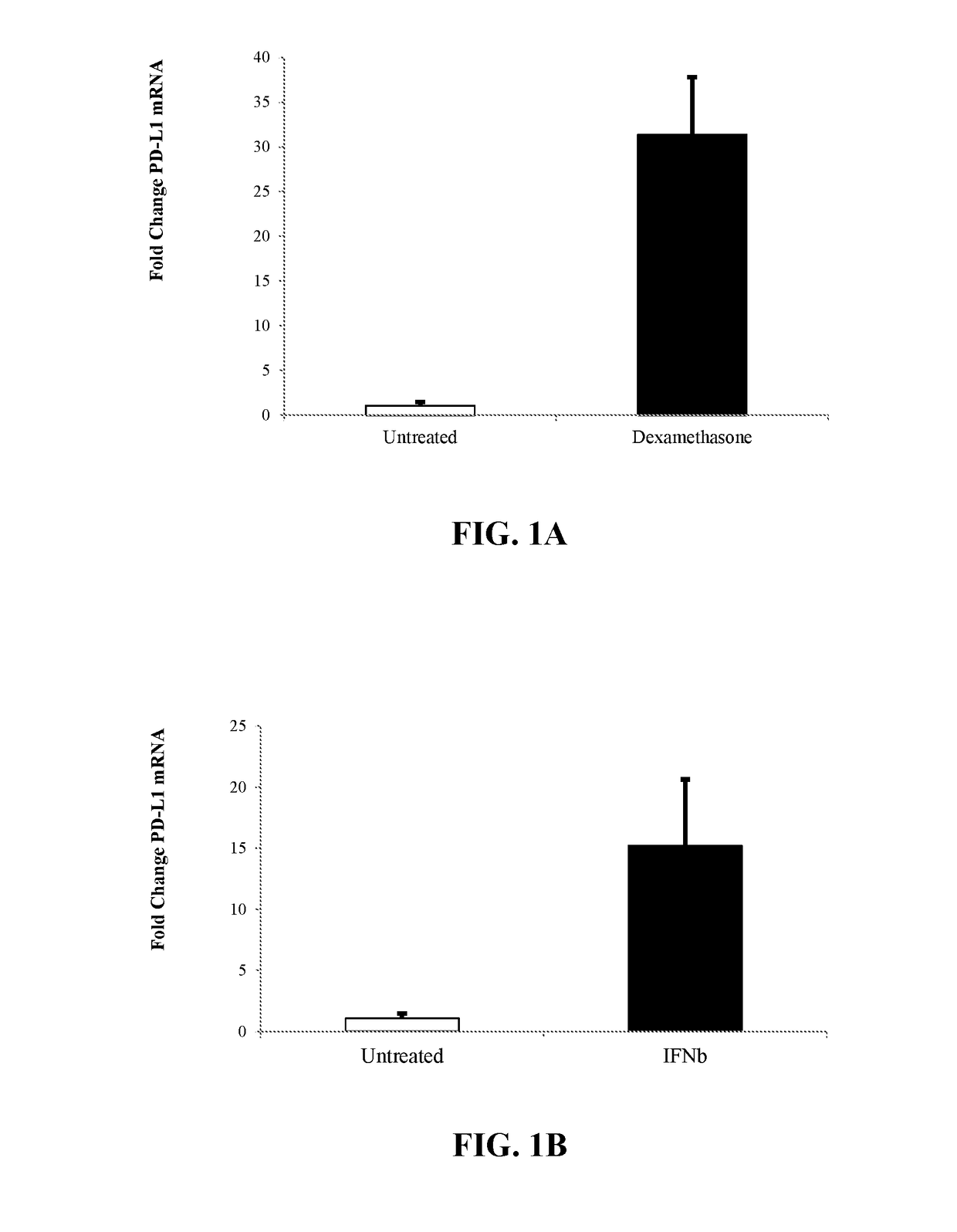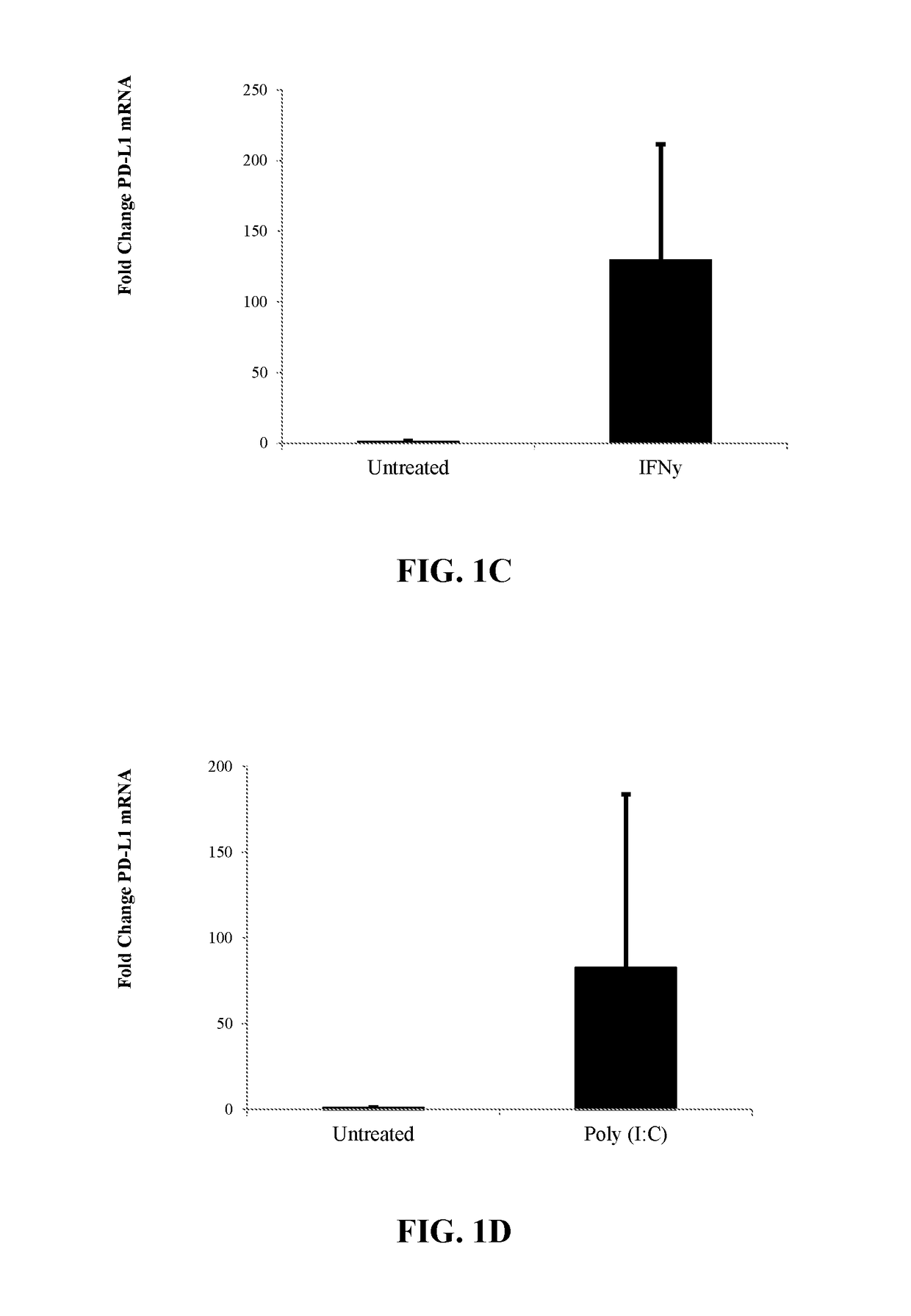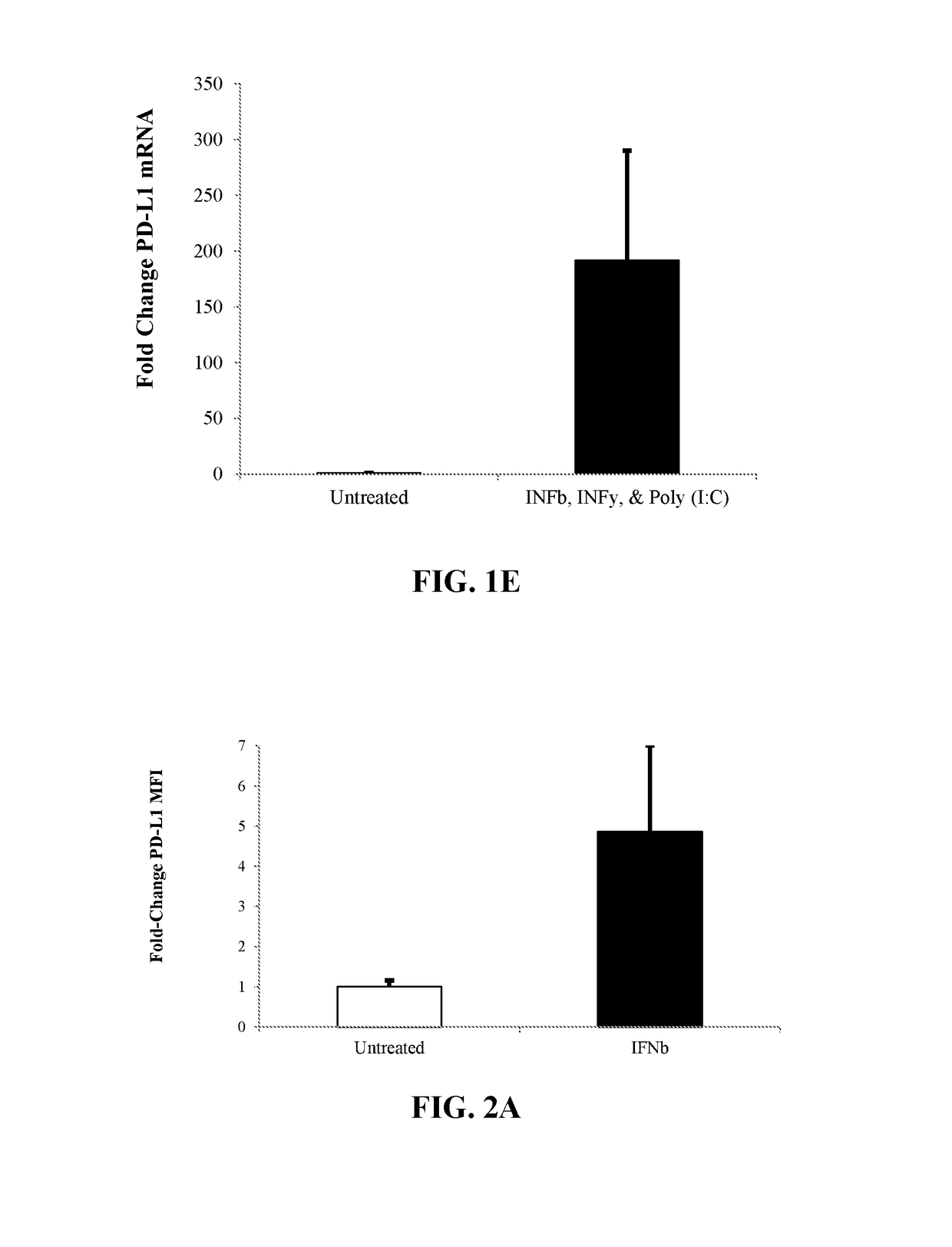Cells with increased immuno-regulatory properties and methods for their use and manufacture
a technology of immunoregulatory properties and cells, applied in the direction of immunological disorders, drug compositions, peptides, etc., can solve the problems of hspc-based immunotherapy's therapeutic potential being limited, affecting the expression of ido-1 cells, and cells in proximity but not in contact with ido-1 cells, etc., to achieve the effect of increasing the expression of pd-l1
- Summary
- Abstract
- Description
- Claims
- Application Information
AI Technical Summary
Benefits of technology
Problems solved by technology
Method used
Image
Examples
example 1
Elevated Gene Expression Levels of PD-L1 (CD274) or IDO-1 in Human Stem and Progenitor Cells
[0231]Human CD34+ stem and progenitor cells isolated from mobilized peripheral blood from three donors were ex vivo treated in STEMSPAN® (StemCell Technologies) for 24 hours at 37° C. with one or more exogenous agents. Following cell treatments, gross mRNA levels were normalized against gross mRNA levels from the untreated cells before RT-qPCR. Levels of PD-L1 or IDO-1 mRNA were quantified from PICOPURE® isolated mRNA (Life Technologies) using an Assay on Demand TAQMAN® RT-qPCR assay (Life Technologies).
[0232]Results of PD-L1 Expression After Modulation are shown in Table 1.
TABLE 1PD-L1 Expression after Modulation With AgentPD-L1Compound nameClass / MOA% Viabilityfold changeTyrphostin AG 835Protein tyrosine61.332.57kinase inhibitorVigabatrinGABA6716.76transaminaseinhibitorBetamethasoneGlucocorticoid86.84.16FluocinoloneGlucocorticoid82.910.58acetonideNitrofuralAntibacterial87.210.28ClobetasolGlu...
example 2
Elevated Levels of PD-L1 (CD274) or IDO-1 Surface Protein on Human Stem and Progenitor Cells
[0236]Human CD34+ stem and progenitor cells (HSCs) isolated from mobilized peripheral blood were ex vivo treated in STEMSPAN® serum-free expansion medium (SFEM) (StemCell Technologies) with stem cell factor (SCF), Flt-3-Ligand, thrombopoietin (TPO), Interleukin-6 (IL-6) for 24 hours at 37° C. with one or more exogenous agents. Following cell treatments, levels of PD-L1 or IDO-1 cell surface protein were measured on the viable CD34+ cells by staining the cells with anti-CD34, anti-PD-L1 or anti-IDO-1, and 7-Aminoactinomycin D (7-AAD). Data was acquired on a FORTESSA® X-20 (Becton Dickinson) and analyzed using FLOWJO® (TreeStar).
[0237]FIG. 2 shows the average fold-change of PD-L1 by median fluorescence intensity (MFI) relative to the untreated sample for three individual donors of CD34+ cells treated with a single exogenous agent (A) 1000 U / mL IFN≢2 (B) 5 ng / mL IFNy (C) 10 μg / mL Poly (I:C) or m...
example 3
T Cell Proliferation is Reduced in the Presence of Modulated HSPC
[0238]HSCs were incubated 24 hours in media containing 1000 U / mL IFNβ, 5 ng / mL IFNγ, and 10 μg / mL Poly I:C or media containing vehicle. The cells were then washed and combined at a 1:1 ratio with autologous T cells. T cell mitogen was added and cocultures were incubated for 5 days. FIG. 3 shows T cell proliferation as measured by flow cytometry.
PUM
| Property | Measurement | Unit |
|---|---|---|
| temperature | aaaaa | aaaaa |
| temperature | aaaaa | aaaaa |
| time | aaaaa | aaaaa |
Abstract
Description
Claims
Application Information
 Login to View More
Login to View More - R&D
- Intellectual Property
- Life Sciences
- Materials
- Tech Scout
- Unparalleled Data Quality
- Higher Quality Content
- 60% Fewer Hallucinations
Browse by: Latest US Patents, China's latest patents, Technical Efficacy Thesaurus, Application Domain, Technology Topic, Popular Technical Reports.
© 2025 PatSnap. All rights reserved.Legal|Privacy policy|Modern Slavery Act Transparency Statement|Sitemap|About US| Contact US: help@patsnap.com



